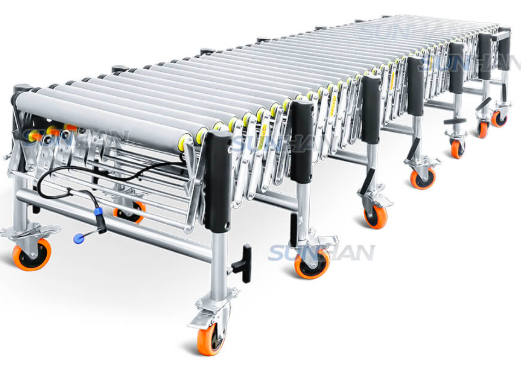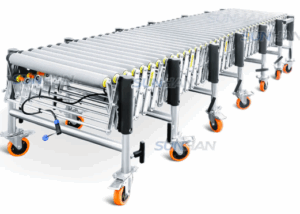Home » What Are Packaging Conveyor Systems?

Packaging conveyor systems are a vital part of modern manufacturing and logistics. They automate the movement of goods and materials during the packaging process, streamline production lines, reduce manual labor, and increase operational efficiency across various industries. Whether you’re in food packaging, pharmaceuticals, or e-commerce fulfillment, understanding these systems is key to optimizing your business operations.
Packaging conveyor systems are designed to transport products, raw materials, and packaging components efficiently along production lines. They minimize manual handling, increase speed, and improve accuracy throughout the packaging process.
A typical system includes several key components:
Packaging conveyor systems can be tailored to transport a wide range of products, whether fragile, bulky, or uniquely shaped, ensuring smooth and safe handling throughout the production line. By integrating these components, packaging conveyor systems ensure a continuous, efficient, and reliable workflow.

Different industries and production needs require different types of packaging conveyor systems. The most common types include:
1. Belt Conveyors:Belt conveyors utilize a seamless belt constructed from materials such as rubber, plastic, or metal to efficiently carry products from one stage of the production process to the next. They are highly adaptable, capable of handling a wide variety of product shapes, sizes, and weights with ease.
2. Roller Conveyors:Roller conveyor systems consist of multiple rotating rollers that guide and move items along the packaging line, making them ideal for heavier or larger goods. Powered roller conveyors further improve efficiency in moving products through various packaging stages.
3. Chain Conveyors:Chain conveyors are designed for heavier items, such as automotive parts or large packages. Known for durability and high load capacity, they are ideal for transporting large, heavy goods.
4. Inclined Conveyors:Inclined conveyor systems move items smoothly across multiple heights within a facility, connecting different stages of the production or packaging process. They are commonly used to transport goods between floors or sections of a warehouse.
5. Overhead Conveyors:Overhead conveyor systems transport products suspended from an elevated track, effectively freeing up floor space for other operations. They are particularly useful for moving bulky, oddly shaped, or high-volume items and are widely applied in industries such as apparel, automotive, and assembly lines.
Investing in packaging conveyor systems offers numerous advantages:
Packaging conveyor systems are essential across multiple industries:
Selecting the ideal packaging conveyor system depends on several key factors:
Packaging conveyor systems are essential for optimizing production lines, reducing labor costs, and improving overall efficiency. They are versatile, customizable, and suitable for a wide range of industries, including e-commerce, food production, pharmaceuticals, and automotive manufacturing.
Investing in the right conveyor system enhances productivity, ensures consistent quality, and supports safer, more efficient operations. Evaluating your specific production requirements will help you select a system that fits your speed, capacity, and space needs.
